Navigate social and professional settings with ease using this Dress Code Cheat Sheet. It's your quick reference to matching attire to occasions, ensuring you're always dressed appropriately. From casual get-togethers to white-tie events, this guide helps you decipher what to wear and when.
The Basics
Dress Codes at a Glance
| Dress Code Name | Description |
|---|---|
| Casual (Women - Men) | The most relaxed dress code, suitable for everyday wear and informal gatherings. |
| Business Casual (Women - Men) | A step above casual, this dress code is often required in professional settings that don't require a suit but still expect a degree of polish. |
| Smart Casual (Women - Men) | A blend between casual and formal, smart casual is slightly more dressed up than business casual but not as formal as business attire. It allows for more personal expression. |
| Cocktail Attire (Women - Men) | A semi-formal dress code suitable for evening social events, balancing elegance and comfort. |
| Business Formal (Women - Men) | A notch above business casual, this is more conservative and traditional, requiring a suit and tie. |
| Festive Attire (Women - Men) | This is specific to certain events, like holiday parties, where attire is fun and thematic but still dressy. |
| Semi-Formal (Women - Men) | More formal than business attire but less so than black tie, semi-formal is often appropriate for evening events. |
| Creative Black Tie (Women - Men) | Offers a twist on the traditional black tie, allowing for more creativity in the formal attire. |
| Formal or Black Tie Optional (Women - Men) | This gives guests the option of wearing black tie attire or formal dark suits. It’s a flexible dress code. |
| Black Tie (Women - Men) | A formal dress code for evening events, requiring a tuxedo for men and an evening gown or dressy cocktail dress for women. |
| White Tie (Women - Men) | The most formal dress code, involving full evening dress: a tailcoat for men, formal gown for women, and often gloves. |
Dress Codes by Occasion
| Occasion | Recommended Dress Code |
|---|---|
| Wedding | Semi-Formal, Formal, or Black Tie |
| Funeral | Business Formal or Smart Casual |
| Office (Daily Work) | Business Casual or Business Formal |
| Job Interview | Business Formal |
| Vatican City Visit | Modest Dress, Smart Casual |
| Theatre or Opera | Smart Casual, Semi-Formal |
| Gala Dinner | Black Tie or White Tie |
| Cocktail Party | Cocktail Attire |
| Academic Conference | Business Casual, Smart Casual |
| Graduation Ceremony | Business Casual, Semi-Formal |
| Charity Event | Business Casual, Semi-Formal, Formal |
| Religious Ceremony | Modest Dress, Smart Casual |
| State Dinner | Black Tie, White Tie |
| Art Gallery Opening | Smart Casual, Cocktail Attire |
| Sports Event | Casual, Smart Casual |
| Dinner Date | Smart Casual, Semi-Formal |
| Beach Wedding | Casual, Smart Casual (Beach Formal) |
| Country Club | Smart Casual, Business Casual |
| High Tea | Smart Casual, Semi-Formal |
| Business Lunch | Business Casual |
| Casual Friday | Casual, Smart Casual |
| Networking Event | Business Casual, Smart Casual |
| Baby Shower | Casual, Smart Casual |
| Date Night | Smart Casual, Cocktail Attire |
| Cruise Dinner | Smart Casual, Semi-Formal |
| Wine Tasting | Smart Casual, Business Casual |
Dress Code Cheat Sheet for Women
Casual (Women)
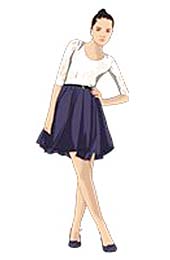
- Description: Comfortable and informal attire suitable for everyday activities.
- Examples:
- T-shirts or casual tops
- Jeans or casual pants
- Sneakers or flat sandals
- Casual dresses or skirts
Business Casual (Women)
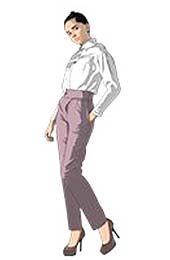
- Description: A mix of professional and casual attire, appropriate for a relaxed office environment or business meetings.
- Examples:
- Blouses or dress shirts
- Skirts or dress pants
- Cardigans or blazers
- Closed-toe flats or heels
Smart Casual (Women)
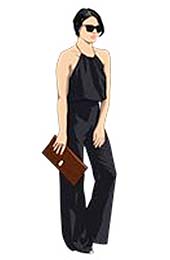
- Description: A polished yet relaxed style that is more dressed-up than business casual, but not as formal as business attire.
- Examples:
- Stylish dresses or jumpsuits
- Tailored pants with a chic top
- Elegant blazers
- Heeled boots or stylish flats
Cocktail Attire (Women)
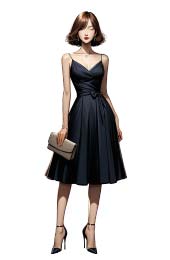
- Description: A semi-formal dress code suitable for evening social events, balancing elegance and comfort.
- Examples:
- Elegant cocktail dresses, typically knee-length or midi.
- High heels or sophisticated flats.
- Accessories like clutches, fine jewelry, and shawls.
Business Formal (Women)
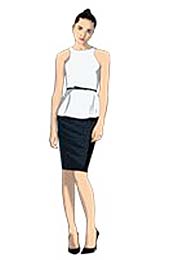
- Description: Conservative and traditional business attire, reflecting professionalism and a high standard of dress.
- Examples:
- Business suits or tailored dresses
- Pant or skirt suits with a blazer
- Conservative heels
- Minimalist accessories
Festive Attire (Women)
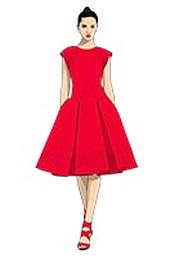
- Description: Dressy and themed attire, incorporating festive elements suitable for holiday parties or celebratory events.
- Examples:
- Dresses with festive colors or sparkles
- Skirts with a dressy top in holiday motifs
- Accessories with festive flair
- Heels or dressy flats with a pop of color
Semi-Formal (Women)
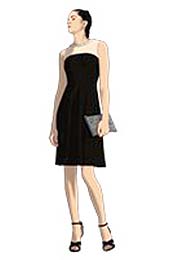
- Description: A dress code that strikes a balance between formal and casual, suitable for cocktail parties or dinners.
- Examples:
- Cocktail dresses
- Dressy separates
- Little black dress
- Mid to high heel shoes
Creative Black Tie (Women)

- Description: Traditional black tie attire with an opportunity for personal expression through unique and fashionable elements.
- Examples:
- Evening gowns with a creative twist
- Tuxedo-inspired outfits or jumpsuits
- Bold accessories or statement jewelry
- Dress shoes with unique details
Formal or Black Tie Optional (Women)
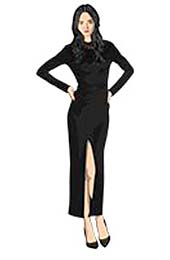
- Description: Offers a choice between formal gowns and slightly less formal, elegant dresses, accommodating varying levels of formality within the same event.
- Examples:
- Formal evening gowns
- Elegant cocktail dresses
- Dressy separates with a formal flair
- High heels or sophisticated flats
Black Tie (Women)
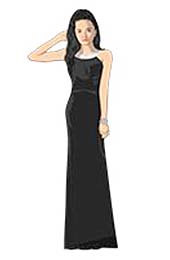
- Description: A formal dress code for evening events, requiring sophisticated gowns or dresses.
- Examples:
- Full-length evening gowns
- Dressy cocktail dresses
- Elegant jewelry
- High-heeled shoes or dressy flats
White Tie (Women)

- Description: The most formal dress code, reserved for state dinners, balls, and other high formalities.
- Examples:
- Full-length ball gowns
- Elaborate jewelry
- Opera-length gloves (optional)
- Formal, high-heeled shoes
Dress Code Cheat Sheet for Men
Casual (Men)
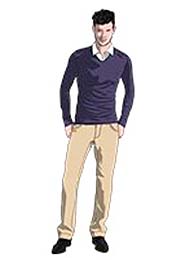
- Description: Relaxed and comfortable attire suitable for everyday wear.
- Examples:
- T-shirts
- Jeans
- Casual sneakers
- Hoodies
Business Casual (Men)
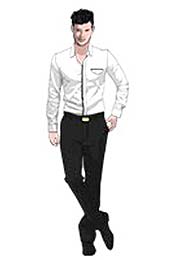
- Description: A blend of professional and relaxed attire, ideal for a business environment that does not require a suit and tie.
- Examples:
- Collared shirts (polo shirts or button-downs)
- Chinos or dress pants
- Loafers or dress shoes
- Sweaters or casual blazers
Smart Casual (Men)
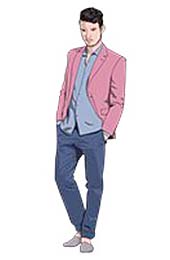
- Description: A smart mix of casual and formal wear, allowing for more personal expression while still looking polished.
- Examples:
- Blazers
- Dress shirts (no tie required)
- Dark jeans or smart trousers
- Leather shoes or smart sneakers
Cocktail Attire (Men)
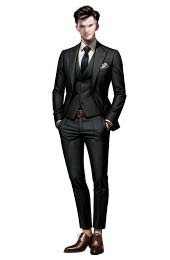
- Description: A semi-formal dress code that is less formal than black tie but more sophisticated than business attire.
- Examples:
- Dark suits with a tie or bow tie (optional).
- Crisp dress shirts, possibly with unique textures or subtle patterns.
- Leather dress shoes, such as Oxfords or loafers.
Business Formal (Men)
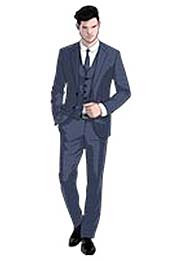
- Description: Traditional and conservative attire, reflecting a high standard of professionalism.
- Examples:
- Business suits
- Dress shirts with a tie
- Leather belt and dress shoes
- Dark, solid colors preferred
Festive Attire (Men)
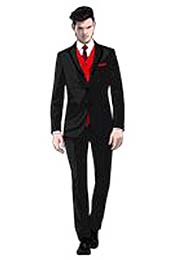
- Description: Dressy attire that incorporates festive colors or patterns, suitable for holiday parties or themed events.
- Examples:
- Blazers or suits in bold colors
- Seasonal ties (e.g., Christmas-themed)
- Dress shirts with festive patterns
- Accessories with a pop of color
Semi-Formal (Men)
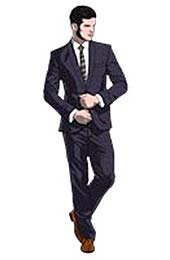
- Description: A dress code that is more formal than business attire but not as formal as black tie, suitable for evening events.
- Examples:
- Dark suits
- White dress shirts
- Conservative ties
- Leather dress shoes
Creative Black Tie (Men)
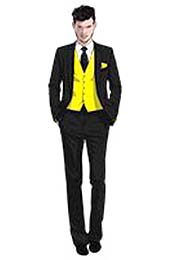
- Description: Traditional black tie attire with a twist, allowing for creative expression through unique accessories or colors.
- Examples:
- Tuxedos with patterned jackets
- Novelty ties or bow ties
- Dress shirts in unconventional colors
- Fun cufflinks
Formal or Black Tie Optional (Men)

- Description: A flexible dress code that allows for a tuxedo or a formal dark suit, providing options for varying levels of formality.
- Examples:
- Tuxedo (optional)
- Dark suits
- Formal dress shoes
- Bow ties or long ties
Black Tie (Men)

- Description: A formal evening wear dress code requiring a tuxedo, ideal for gala events, formal weddings, and sophisticated soirées.
- Examples:
- Black tuxedo
- White dress shirt
- Black bow tie
- Patent leather dress shoes
White Tie (Men)

- Description: The most formal dress code, involving full evening dress for the most formal occasions.
- Examples:
- Black tailcoat
- White waistcoat
- White bow tie
- Formal black trousers and dress shoes
Useful Tips and Links
Tips for Choosing the Right Dress Code
-
Understand the Terminology: Familiarize yourself with the definitions of different dress codes. Knowing the difference between "semi-formal," "business casual," and "cocktail attire" can save you from being under- or over-dressed.
-
Consider the Occasion: Match the formality of your attire to the event. Weddings, galas, and state dinners typically call for more formal attire, while casual gatherings and some workplace environments may require less formal clothing.
-
Ask the Host: If you're unsure about the dress code for an event, don't hesitate to ask the host for clarification. It's better to ask than to assume and feel out of place.
-
Venue and Time of Day: The location and timing of an event can dictate its formality. Evening events generally require more formal attire than daytime ones, and venues like upscale restaurants or country clubs may have their own specific dress codes.
-
Plan Ahead and Have Essentials: Invest in versatile attire that can be dressed up or down. Essentials like a tailored suit for men and a little black dress for women can be adapted to various dress codes with the right accessories and footwear.
5 Useful Resources
-
Primer Magazine's Dress Codes, Explained: An extensive guide that clarifies what to wear for various levels of dress codes, from casual to white tie.
-
The Fashionisto's Men's Dress Code Types: Explains the nuances of men's dress codes, helping you decide how to dress for different professional and social settings.
-
Emily Post's Attire Guide: Offers detailed advice on how to dress appropriately for any occasion, covering a wide range of dress codes.
-
ProCon.org's Analysis of Dress Codes: Discusses the advantages and disadvantages of dress codes, providing a broader social perspective.
-
Western Dress Codes on Wikipedia: Provides a historical overview of Western dress codes, useful for understanding the context behind various attire standards.
